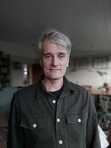Franco Renrow's Blog
October 10, 2024
Historical inventions : reimagining the past

Past Glory imagines historical places and events, either weaving them into real places or events or totally fabricating them.
St Martins Goose Fair
There is an old racecourse at the edge of Richmond with a spectacular view over the town and across to the Hambleton Hills. There lies the sad remains of a grandstand that was built in the eighteenth century and not too far off an elegant tall building that served as the starting point.
The history of horse racing in Richmond is an interesting topic in itself. I began to wonder walking along the old race course with the dog walkers and families what came before and why are we preserving it when it went out of use years ago? What if our ancestors were not so squeamish about demolishing something that were no longer needed to build their shiny new race course?
I began devising an imaginary historical landscape of jousting fields, but that all seemed a bit temporary. Then I thought about it being the site where people travelled across the district to meet. I invented an imaginary Goose Fair held in the autumn that brought people from far and wide. Geese fairs were held in November while the roads were still navigable, and the geese their fattest and the feast of St Martins (11th November), or old Halloween was associated with feasting.
What would had looked like? There would need to be accommodation, shelter, places to eat. These may have been timber structures? The fairs would often be allowed, authorised by a charter or act of parliament and run by a committee. I also explore what customs came with the Goose Fair and introduced a lantern parade.
The fun in writing about the imaginary Goose Fair was weaving in the plausible with the imaginary and thinking about the details of how it would have worked and building the narrative around who might have wanted to get rid of it and build a race course
Tunnels
There are legends of tunnels in Richmond. The most well known one is the legend of the drummer boy, who was sent down an tunnel with his drums and told to walk and play, he made it over half way to Easby Abbey when his drums went silent. There is also another local legend of King Arthur who is said to have been seen by a local going into a tunnel that opened up into a room where Arthur and his knights were asleep at the table.
Building on these legends, I took this further, and added a big dollop of imagination. The tunnel features in the book as part of the quest that James and Luke embark on, the fictional piece centres around an old entrance in St Mary’s church that miraculously wasn’t uncovered during extensive renovations in the 19th Century. The tunnels in the story have it all, a secret chamber, a blocked passage way and some strange engravings. Of course there are no such tunnels in real life.
Glassworks
A key part to my imagined past of Richmond. There may have been glass making in the past but not the one of my imagination. I constructed the Glassworks in the novel as being at an important location near sources of minerals, coal, and alluvial sand, not all of which exists in current day Richmond. The narrative around the glassworks is made up of an internationally important business, with connections to the medieval, continental glassmaking centres of Bohemia and Murano in the Venetian republic. I developed the idea that glass was traded across Europe through the network of the guilds and the Hanseatic League, to build the story of great wealth in medieval Richmond.
In my imagination, a wealthy business would manifest itself in the buildings of medieval Richmond which is fictional fabric of the book. An architectural wonder which mysteriously vanished, and no trace of it in modern Richmond, replaced by the austere Georgian buildings that is the heritage treasure of the present day town.
Guildhall
As part of the imaginary wealthy medieval town of Richmond, the book develops the fiction of the grand Guildhall of Richmond and another minor guildhall both on the sites of Georgian buildings in modern day Richmond.
The story builds on the success of the glassworks and the guilds of Richmond. I create a magnificent guildhall in the story that rivals the great guildhalls of medieval Europe.
Past Glory: An Archaeological Thriller
Published on October 10, 2024 01:29
•
Tags:
archaeological-thriller, historical-mystery
September 30, 2024
Local legends of Richmond: the drummer boy

The legend of the drummer boy is that a tunnel was discovered in Richmond, that is the one in North Yorkshire, and there were stories that it connected to the Abbey at Easby, where the drummer boy was sent down the entrance with his drums. He began playing his drums as he walked down the tunnel, and above the soldiers followed the noise. The stone marks the spot where the drumming stopped and the boy was never seen again.
This is a perfect legend to weave into a novel that is based on historical fiction. In my first novel, Past Glory, I weave in the legend and take the reader to an imaginary tunnel network constructed out of the stone as part of an ancient network. I developed the narrative around a secret entrance from St Mary's church and build a mysterious mechanism to a chamber as part of a treasure hunt.
The freedom of fiction allows the author to explore and build credible sub plots made more plausible when weaving in local legends.
Published on September 30, 2024 00:28
•
Tags:
drummer-biy, historical-fiction, past-glory, richmond, thriller



